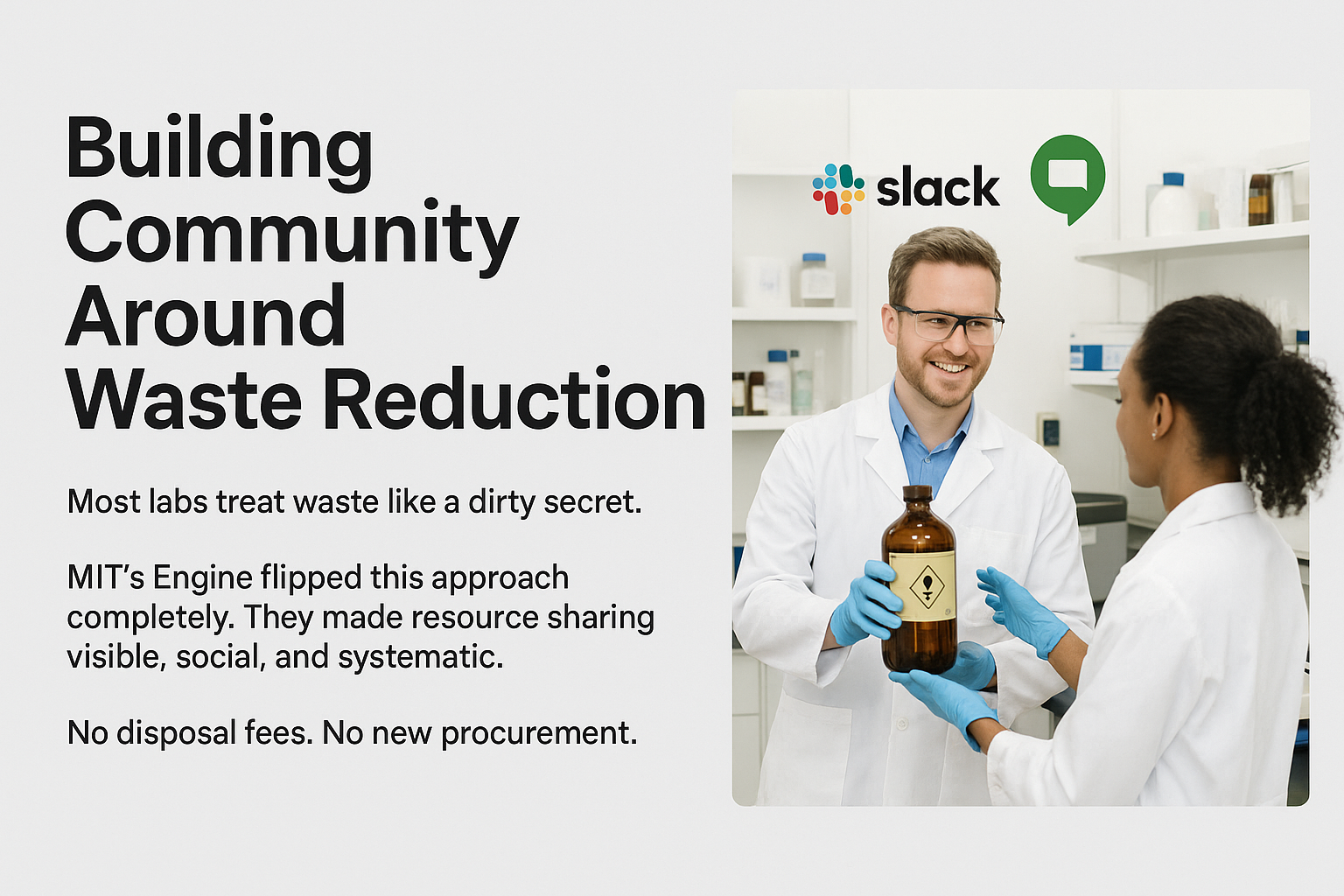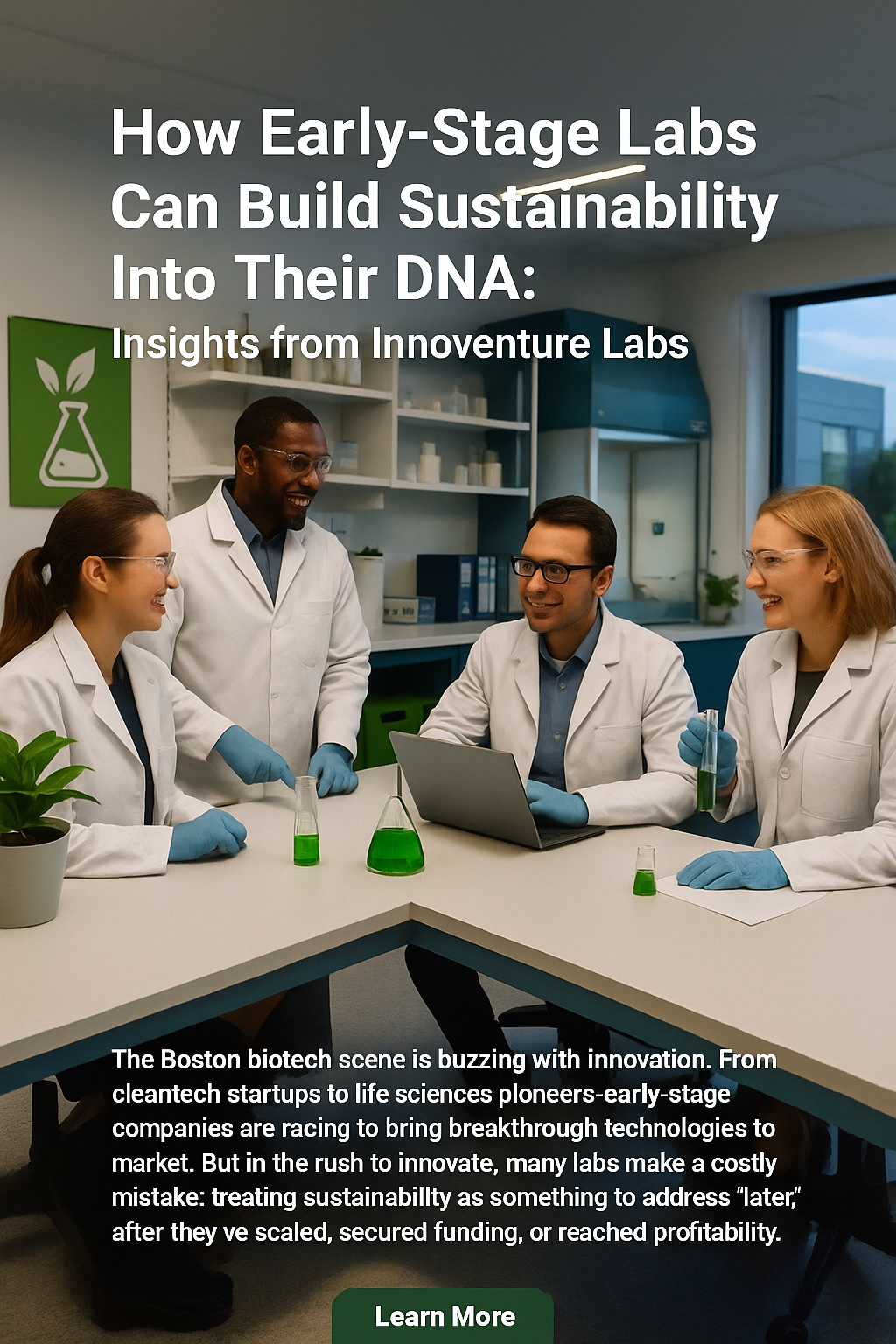Building Community Around Waste Reduction
Building Community Around Waste Reduction

The conversation is the first step
Most labs treat waste like a dirty secret.
Expired reagents get quietly disposed of. Unused materials disappear into hazmat bins. Failed experiments generate mountains of single-use consumables.
Everyone pretends this doesn't happen.
The Engine (built by MIT) flipped this approach completely. They made resource sharing visible, social, and systematic.
How Community-Driven Waste Reduction Works
Here's their model in action:
Company A finishes a project with leftover chemicals. Instead of disposal, they post on the resident Slack channel. Company B across the hall needs exactly those materials for their next experiment. Handoff happens in minutes.
No disposal fees. No new procurement. No delivery emissions.
The Circular Systems That Emerge
Annie McElroy from The Engine describes how they've built entire circular systems through community collaboration:
- Pipette tip boxes become new waste containers
- Biohazardous materials become plastic lumber (via Triumvirate Environmental)
- Waste bins come from recycled lab consumables
- Unused chemicals move between companies instead of disposal
But the real breakthrough isn't the recycling. It's the communication systems that make sharing seamless.
The Infrastructure of Sharing
What makes community waste reduction actually work:
Face-to-face conversations in shared spaces
Digital platforms (Slack channels, shared inventory systems)
Tracking systems showing what's available and what's needed
Community agreements about resource sharing protocols
Cultural norms that make asking (and offering) the default
The Isolation Problem
Most labs operate in silos:
- They buy everything new
- Dispose of everything unused
- Pay twice for materials that could be shared once
- Never know what's available next door
The cost compounds: procurement fees, disposal fees, delivery emissions, and wasted resources.
Real Examples from The Engine
The $500 reagent: Company needed specialized chemical for single experiment. Found it unused on neighbor's shelf. Saved procurement cost and 2-week delivery wait.
The equipment share: Three companies needed the same centrifuge model but at different times. Shared one unit instead of buying three. Saved $150K in capital costs.
The consumables exchange: Companies standardized on common pipette tips and shared bulk orders. Cut per-unit costs by 40%.
Why Communication Matters More Than Technology
You don't need sophisticated systems. You need:
Visibility: Ways for people to see what others have and need
Trust: Cultural norms that reward sharing over hoarding
Ease: Low-friction ways to connect supply with demand
Recognition: Acknowledgment for those who contribute
A Slack channel works better than a complex database if people actually use it.
The Startup Advantage
For early-stage companies, community resource sharing solves critical problems:
Limited budgets: Access materials you can't afford to buy
Uncertain needs: Try before committing to large orders
Speed: Get what you need today, not in 2 weeks
Network: Build relationships with potential collaborators
How to Start in Your Lab
Create the channel. Slack, Teams, email list—whatever your team uses.
Post one thing. Share something you don't need. Set the example.
Ask before buying. Make it standard practice to check with neighbors first.
Track the wins. Document money saved and waste avoided.
Celebrate sharers. Recognize people who contribute to the system.
The Culture Shift
Moving from isolation to community requires changing the default:
Old default: "I need X, better order it"
New default: "I need X, let me ask around first"
That simple shift creates compound benefits:
- Less waste
- Lower costs
- Stronger relationships
- Faster research
- Better environmental outcomes
Beyond Materials
The community model extends beyond chemical sharing:
Equipment access: Share expensive instruments
Expertise exchange: "Has anyone run this protocol?"
Troubleshooting: Collective problem-solving
Vendor relationships: Collective bargaining power
Best practices: Learning from each other's wins and losses
.jpg)

